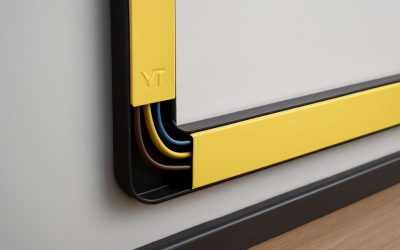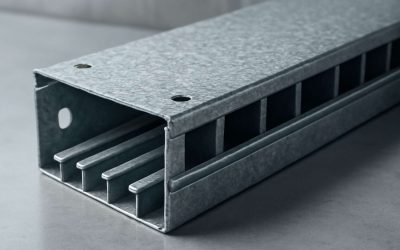
Cable conduit is a type of tubing that protects wires from damage and helps to keep them insulated. It’s used to run wires in buildings and can be made of several different materials. In some situations, conduit is also necessary to bury cables that are located underground.
Rigid metal conduit (RMC) is one type of electrical conduit. It is usually made of heavyweight galvanized steel and installed with threaded fittings. It is typically expensive to buy and install, but it is durable and dependable.
Flexible metal conduit (FMC) is another type of conduit that can be installed indoors and outdoors. It is also known as “greenfield.” It is a spiral-shaped conduit that allows you to create bends in the wires that are in it. This makes it a great alternative for many types of installations, including lights, attic vents and water heaters.
Liquid-tight flexible metal conduit is a similar product to FMC, but it has a plastic or non-metallic outer covering. This material is more resistant to cracks and abrasions than standard FMC, making it ideal for use in a moisture-prone area.
The liquid-tight conduit is a little more expensive than FMC, but it offers some additional benefits that you’ll appreciate in your project. For starters, the plastic or non-metallic outer coating resists corrosion. This is especially important for electrical wiring in areas where moisture or a lot of chemicals are present, such as coastal locations, chemical plants and oil refineries.
EMT or Electrical metallic tubing is a type of conduit that can be bent using a special tool called a conduit bender. It is generally used for runs that don’t need to be very long, such as between a series of electrical boxes. It is also a common choice for running wires on the outside of a building because it can be a decorative and attractive way to protect a building from falling debris.
LESSO or Liquid-tight & Seal-Tight Conduit
There are several different kinds of LESSO conduits that you can purchase for your next project. These include both metal and plastic, and they can be installed both indoors and outdoors. They are commonly used for wiring up large appliances and equipment like air conditioners and motors.
LESSO is also a good option for burying cable and wires that are located in your basement or under your roof. This is because they can withstand the weight of the cables and are very resistant to the elements.
A few different materials are used for LESSO conduits, including aluminum and steel. They are available in various colors and can be buried or embedded into concrete.
Some conduits are also waterproof or submersible, which can make them a great option for certain applications. For example, they are often used to protect sensitive circuits from electromagnetic interference. They can also be used to prevent the emission of radiation from enclosed power lines.
Other types of conduits are available for a variety of other purposes, such as fire alarms. They can be a little more costly, but they are an excellent option for wiring up a home’s security system and other sensitive systems.



0 Comments